Miami, FL Pollen and Allergy Report for Summer 2023
Pollen Allergy Trends in Miami, FL
When is pollen lowest in Miami, FL?

May
Lowest month total PPM
Avg. PPM
When is pollen highest in Miami, FL?

April
Highest month total PPM
Avg. PPM
How does pollen in Miami, FL compare to Florida?
Miami has a higher average PPM than the state of Florida.
Miami yearly avg PPM:
Florida yearly avg PPM:
How does pollen in Miami, FL compare to the USA?
Miami has a higher average PPM than the USA.
Miami yearly avg PPM:
USA yearly avg PPM:
Is pollen worse this year in Miami, FL?
Spring 2023 was better than spring 2022.
Spring 2023 PPM:
Spring 2022 PPM:
Average PPM in Miami, FL
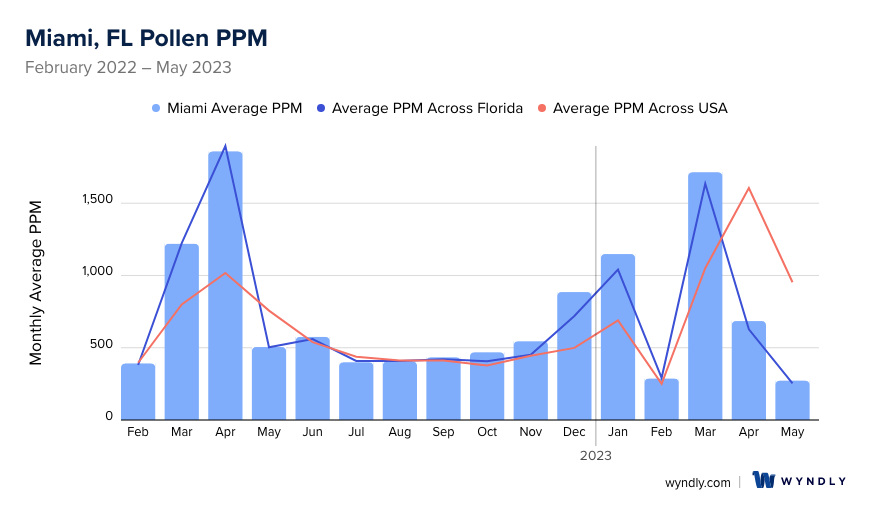

Miami, FL Pollen and Allergy Breakdown by Month
Grass
When is grass pollen highest in Miami, FL?
April has the highest grass pollen in Miami, FL with an average PPM of
When is grass pollen lowest in Miami, FL?
December has the lowest grass pollen in Miami, FL with an average PPM of
Tree
When is tree pollen highest in Miami, FL?
March has the highest tree pollen in Miami, FL with an average PPM of
When is tree pollen lowest in Miami, FL?
July has the lowest tree pollen in Miami, FL with an average PPM of
Weed
When is weed pollen highest in Miami, FL?
December has the highest weed pollen in Miami, FL with an average PPM of
When is weed pollen lowest in Miami, FL?
February has the lowest weed pollen in Miami, FL with an average PPM of
Miami, FL Pollen Monthly Breakdown by Pollen Type
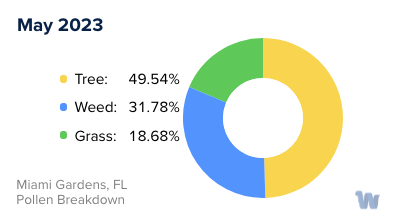

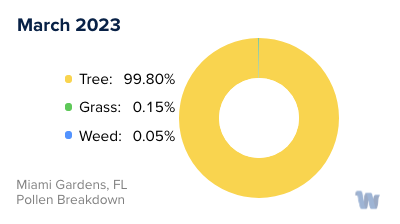

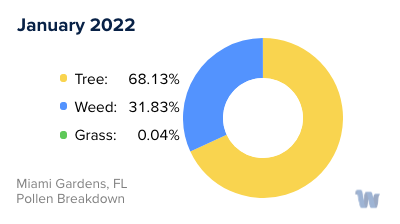


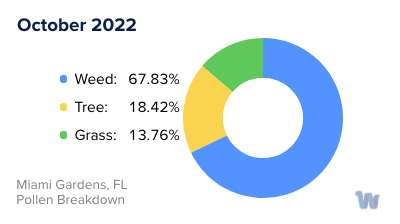
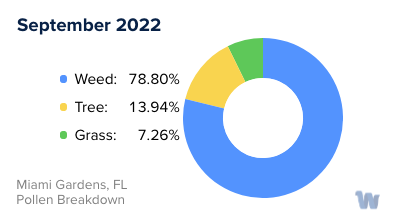
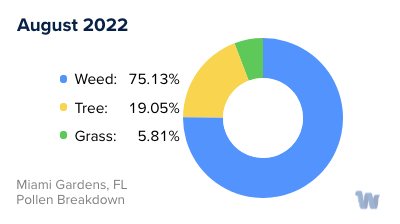
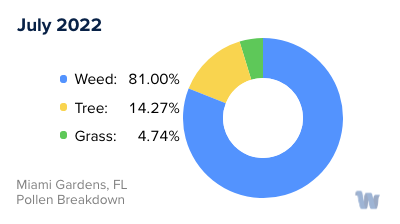
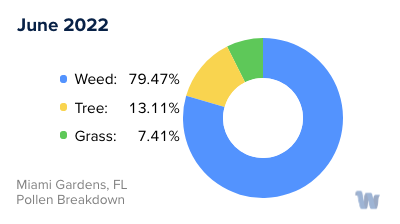
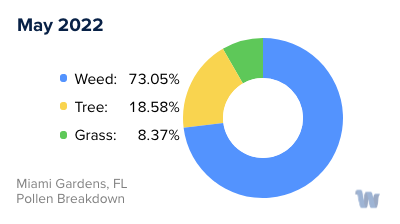

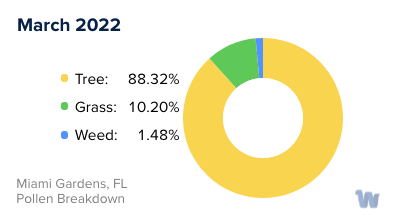
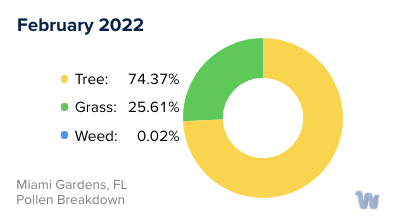
Pollen and Hay Fever in Miami, FL
In Miami, Florida, the subtropical climate and unique ecosystem harbor a multitude of plant species, many of which release pollen—an unseen but pervasive contributor to allergies and hay fever. Pollen allergies, often referred to as hay fever or by its medical term, seasonal allergic rhinitis, occur when the immune system overreacts to airborne pollen particles. This condition is especially prevalent during specific periods of the year, prompting what we recognize as pollen seasons.
In Miami, the primary pollen seasons encompass the spring and fall. It's essential to recognize that different types of plants release their pollen at varying times of the year, contributing to the diversity of pollen particles in the air during these seasons.
Springtime, roughly from February to April, is marked primarily by tree pollen. Oak, pine, and cedar are among the main culprits. These trees release substantial amounts of pollen, creating a difficult period for those allergic to tree pollen.
As we transition into the fall season, from August to November, grass and weed pollen become predominant. Bermuda grass, Timothy grass, and ryegrass are common grasses found in Miami. Simultaneously, ragweed, a weed widely spread across the United States, peaks in the fall and becomes a major source of allergenic pollen.
Pollen from various other local and non-native plants such as Melaleuca and Brazilian Pepper also plays a role, as they tend to release pollen throughout the year, leading to year-round symptoms for some individuals.
Although Miami's mild winters often provide a respite from high pollen counts, certain species such as Australian pine might still release pollen during this period.
Understanding the types of pollen prevalent in Miami and their respective seasons can provide a better grasp of pollen allergies and hay fever. Despite the unique challenges the city's diverse plant life may present, it's important to remember that these same plants contribute to Miami's vibrant and colorful landscapes.


